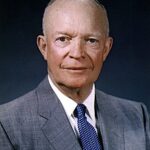The Historic Decision
President Dwight D. Eisenhower signed the Federal-Aid Highway Act on June 29, 1956. This landmark legislation created the Interstate Highway System, authorizing 41,000 miles of highways. The decision stemmed from Eisenhower’s military experience and concerns about national defense mobility. 📊 The project cost $25 billion initially, becoming America’s largest public works program.
Military Origins and Strategic Planning
Eisenhower’s 1919 cross-country military convoy took 62 days to travel from Washington to San Francisco. This experience, combined with his observations of Germany’s autobahn system during World War II, convinced him of highways’ strategic importance. The Interstate Highway System would enable rapid military deployment and civilian evacuation during emergencies.
Bipartisan Support and Implementation
The legislation passed with overwhelming bipartisan support in Congress. 💰 The Highway Trust Fund, funded by gasoline taxes, financed 90% of construction costs. States contributed the remaining 10%. This financing mechanism ensured sustainable funding without burdening the federal budget directly.
Impact:
Economic Transformation
The Interstate Highway System generated massive economic benefits for decades. 💰 Every dollar invested returned $6 in economic growth through reduced transportation costs and increased commerce. The system enabled just-in-time manufacturing, reduced shipping costs, and created millions of construction jobs. Suburban development accelerated dramatically as highways connected cities to outlying areas.
Social and Geographic Changes
The highways fundamentally reshaped American society and settlement patterns. Rural communities gained access to urban markets and services. 🌍 The system facilitated the growth of suburbs and shopping malls while contributing to inner-city decline. Interstate highways enabled greater mobility for families and businesses, transforming how Americans lived and worked.
Long-term National Benefits
The Interstate Highway System remains one of America’s greatest infrastructure achievements. It enhanced national defense capabilities, reduced travel times by 30-40%, and improved road safety significantly. The system continues supporting economic growth, facilitating $6 trillion in annual commerce. Modern logistics, tourism, and emergency response systems depend entirely on this highway network that Eisenhower envisioned.
